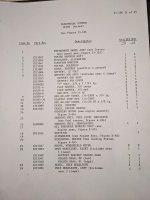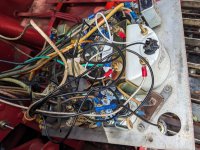Today I went out to put the cat on the trailer for a trip tomorrow. Had difficulty getting it to start. The starter would engage but the engine would not start. I tried started fluid but no luck. Then nothing from the starter but a click from the solenoid. I did some trouble shooting to figure things out and found that the cable from the solenoid to the starter had shorted out due to it rubbing on the engine block. The starter is fried and I need to replace I took it in and had it tested).
My question is this: With the cable shorting out, would that prevent the engine from firing? I ran the cat two days prior with zero issues, fired right up. As a note, while cranking, it would momentarily catch like it wanted to run but as soon as it did, it stopped?
Needless to say, I am baffled with this. Any insight would be great!
ra
71 thiokol 1202B with Ford industrial 200 straight six.
My question is this: With the cable shorting out, would that prevent the engine from firing? I ran the cat two days prior with zero issues, fired right up. As a note, while cranking, it would momentarily catch like it wanted to run but as soon as it did, it stopped?
Needless to say, I am baffled with this. Any insight would be great!
ra
71 thiokol 1202B with Ford industrial 200 straight six.




